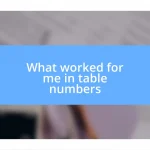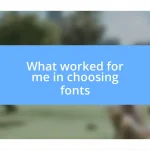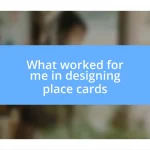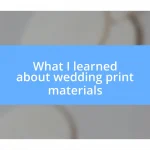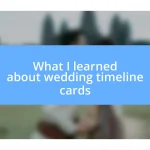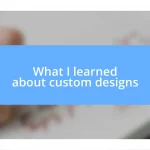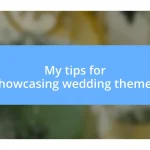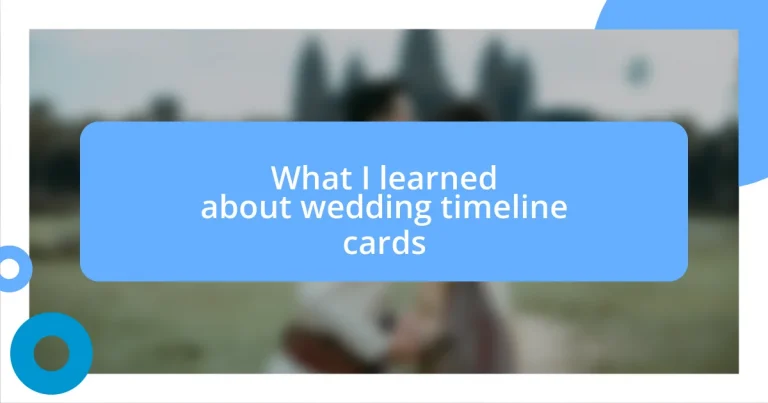Key takeaways:
- Wedding timeline cards enhance guest experience by providing clarity and organization, alleviating stress on the wedding day.
- Key elements of effective timeline cards include structure, clarity, and visual appeal, allowing for personal expression and emotional engagement.
- Popular formats for timeline cards range from infographic styles to traditional lists and digital versions, each offering unique ways to present the day’s events effectively.
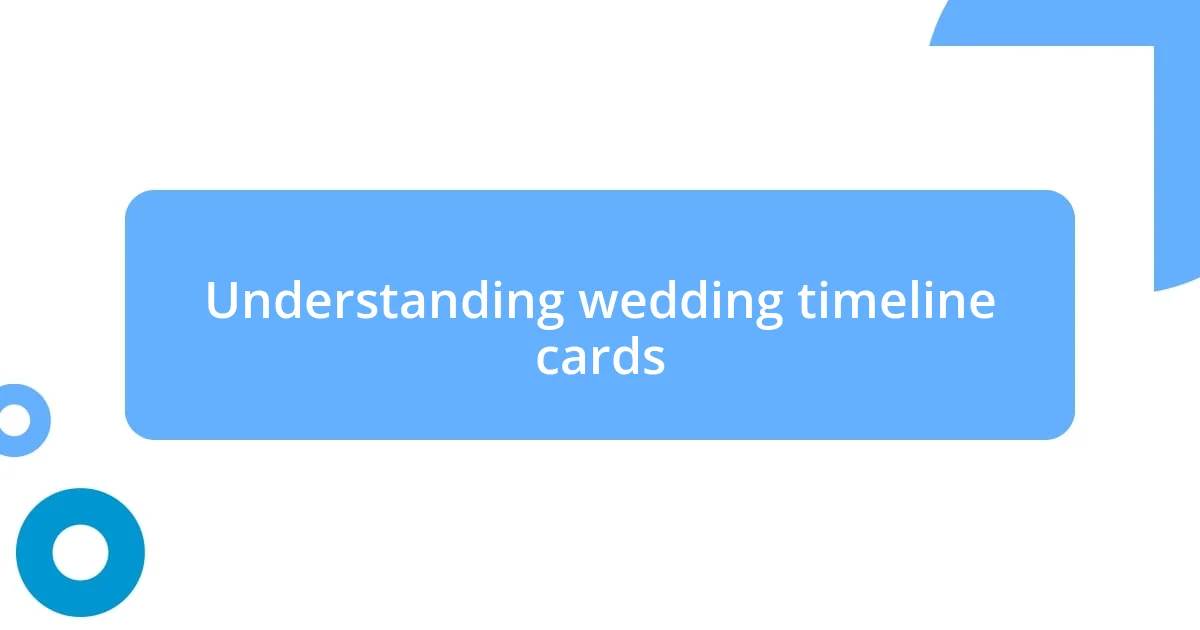
Understanding wedding timeline cards
Wedding timeline cards are essential tools that help both couples and guests navigate the day’s events seamlessly. I remember the first time I attended a wedding where they used these cards; it transformed my experience completely. I could easily anticipate what would happen next, from the ceremony to the cake-cutting. Doesn’t it feel reassuring when you know what’s coming up, especially on such a big day?
These cards not only provide clarity but also help set the tone for the wedding. Picture this: as a guest, receiving a chic, beautifully designed timeline card sparks joy and excitement. I’ve often thought about how a well-organized timeline can elevate the entire atmosphere of a wedding. Who wouldn’t appreciate knowing when to catch the bouquet toss or when the couple is having their first dance?
Moreover, the emotional weight of a timeline can’t be understated. It reminds everyone involved, including the vendors and bridal party, of the significance of each moment. Personally, I’ve found that when I have a clear plan, I can focus on enjoying the celebrations rather than worrying about what’s next. Isn’t that what we all want on such a monumental occasion?
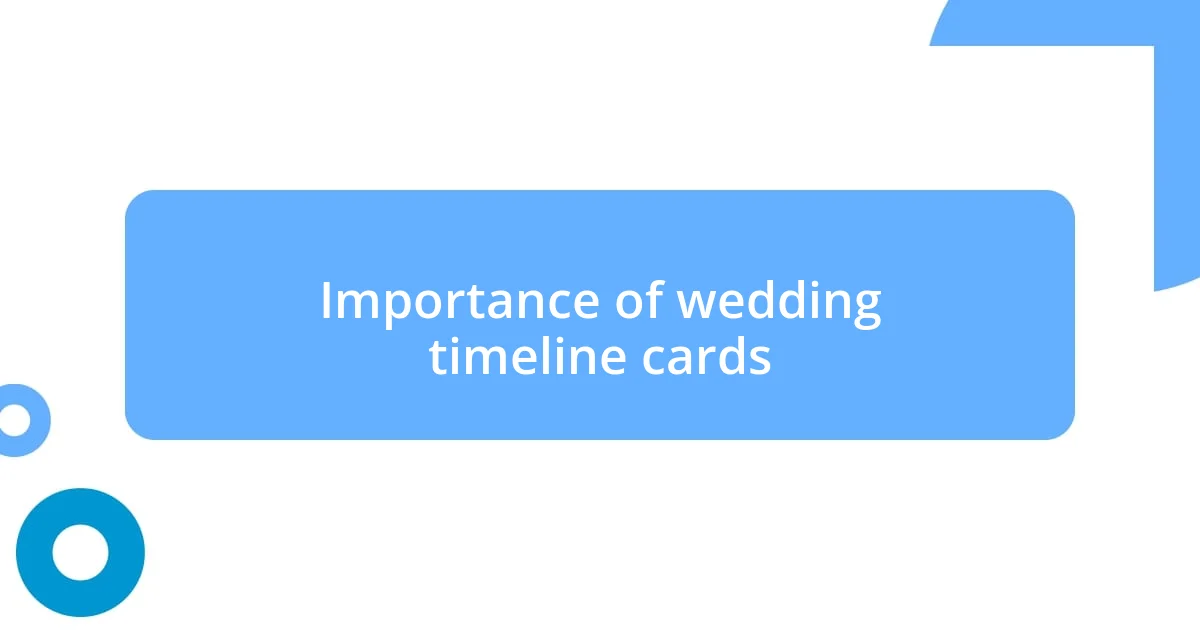
Importance of wedding timeline cards
Having a well-structured wedding timeline card is crucial. I’ve seen how these cards act as a roadmap, letting everyone know when to be where, whether it’s capturing that perfect moment or ensuring the right people are poised for the bouquet toss. This organization alleviates the stress of the day, allowing couples to focus on what truly matters — celebrating love with friends and family.
- In my experience, timeline cards reduce anxiety for both couples and guests.
- Knowing the schedule creates excitement around each event.
- Engaging visuals on these cards can enhance the wedding’s theme.
- They serve as a keepsake, reminding everyone of a beautiful day.
- I’ve observed that even vendors appreciate knowing the timeline, which helps them perform their tasks efficiently.
When it comes to weddings, sipping on that celebratory drink feels a bit sweeter when you know what comes next. I recall a wedding where the timeline was prominently displayed, and it encouraged everyone to mingle and enjoy the festivities without that nagging feeling of uncertainty. This small detail turned into a big win for both the couple and their guests, highlighting the undeniable importance of a well-thought-out timeline card.
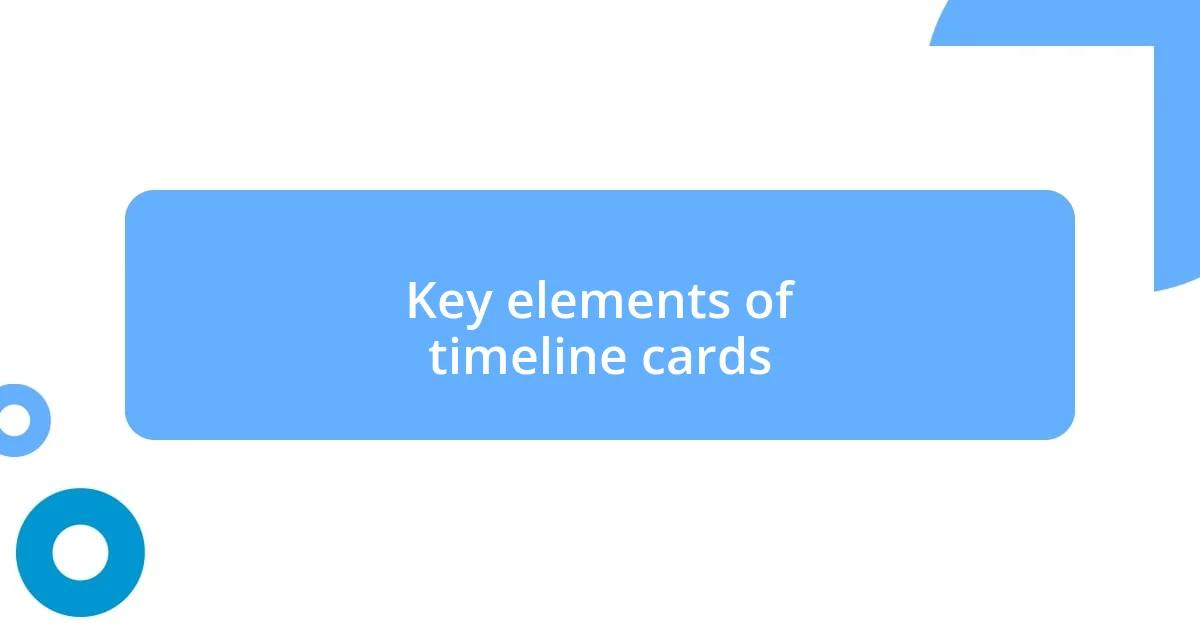
Key elements of timeline cards
Timelines on wedding cards essentially organize the day’s events, ensuring that everyone knows where to be and when. I recall attending a wedding where partners had humorously dedicated time slots for specific moments, like their dog’s bone ceremony! It was a playful touch that brought laughter and joy while keeping everything on track. These cards really highlight that timelines are not just functional; they can also express personality and individuality.
Another key element worth noting is clarity. Each event must be precisely described, allowing guests to prepare emotionally for what’s next. At a friend’s wedding, I was moved by how the timeline included personal stories for each segment, reminding us all of the couple’s journey. The heartfelt details added depth and tenderness to the proceedings, creating a richer experience.
Engaging visuals play a significant role, too. I’ve seen timeline cards that incorporated beautiful graphics and colors reflecting the wedding’s theme. One time, I received a timeline card designed like a vintage train ticket, perfectly aligning with the couple’s travel-themed wedding. It added an element of fun! Such creativity not only serves to inform guests but also amplifies the overall aesthetic of the event itself.
| Key Element | Description |
|---|---|
| Structure | Organizes events clearly for all attendees |
| Clarity | Describes events in relatable terms to engage emotions |
| Visual Appeal | Enhances the look and theme of the wedding |
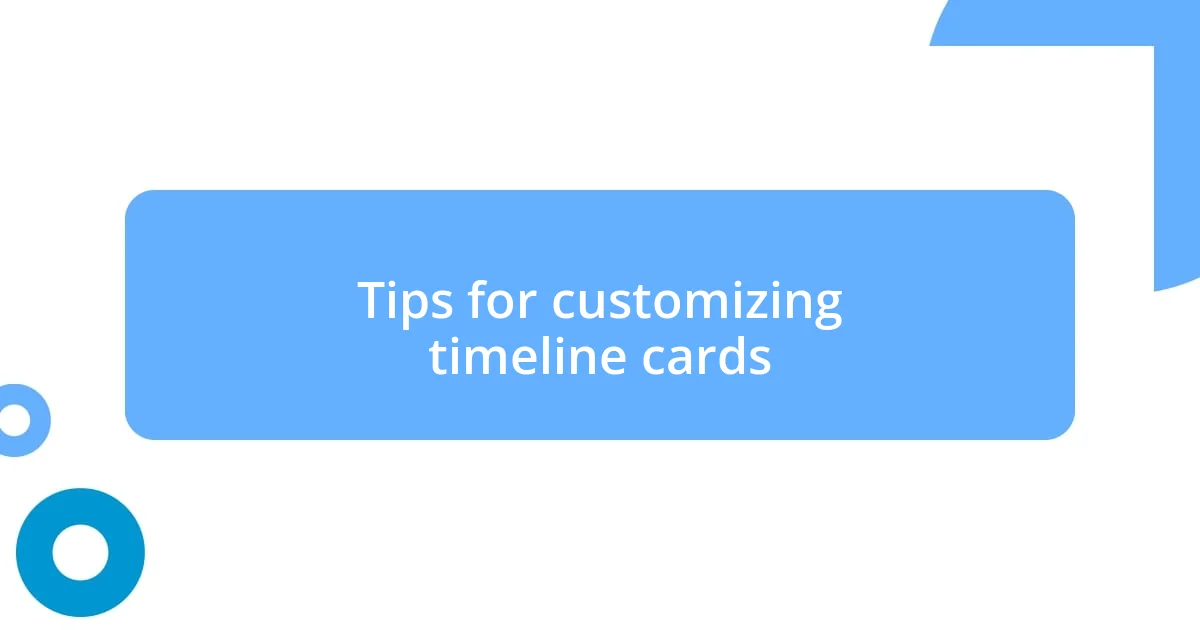
Tips for customizing timeline cards
Customizing wedding timeline cards can be a delightful way to reflect your personality as a couple. I remember when my friends used playful, quirky fonts and included doodles that captured their unique vibe. Each card felt like a little snapshot of their love story, encouraging guests to delve into the document rather than view it as another piece of mundane information.
One tip I’ve picked up is to think about the flow of emotions throughout the day. Consider how guests will feel during each moment. At a wedding I attended, the couple highlighted key milestones with personal anecdotes, like their first date or memorable trips. This connection not only informed but also engaged everyone, making the timeline a shared celebration of the couple’s journey.
Don’t shy away from getting creative with your visuals! I once received a timeline card adorned with watercolor illustrations of the venue’s flowers, perfectly tying in with the wedding’s color palette. It’s those small touches that can spark joy and excitement among guests. How do you want them to feel as they check in to see what comes next? The answer to that question can guide your design and content choices beautifully.
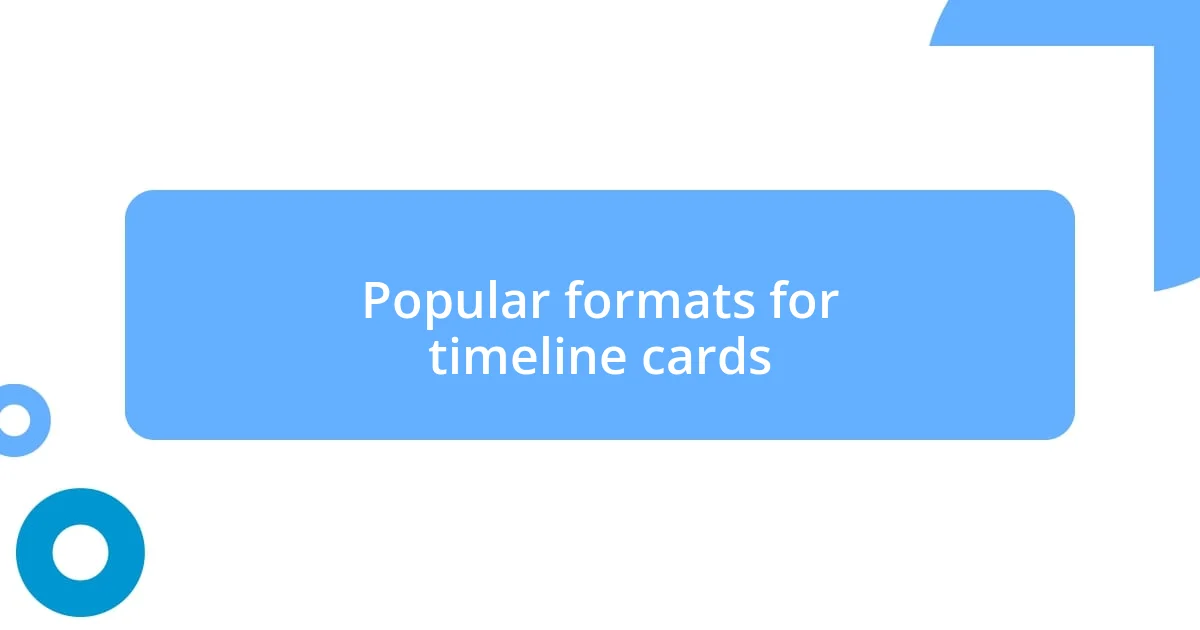
Popular formats for timeline cards
When it comes to the formats of wedding timeline cards, there are a few styles that really stand out. For instance, I’ve noticed a rising trend in using infographic-style timelines, which visually represent the day’s events. At one wedding, the couple designed a timeline that was like a flowchart, making it easy for guests to understand the sequence of events at a glance. It was not just informative; the playful graphics drew people in, sparking conversations about their favorite parts of the day.
Another popular approach is the traditional listed format, where events are laid out in chronological order. I remember attending a wedding with a simple yet elegant card that included time slots alongside brief descriptions. As we settled into our seats, I appreciated how effortlessly it guided our expectations. I often wonder if this type of format is more effective in conveying the day’s agenda compared to more artistic styles, as it leaves nothing to interpretation and keeps everyone on the same page.
Digital timeline cards are also gaining traction, often shared via wedding websites. I’ve seen couples use interactive formats that allow guests to click through different segments, revealing detailed information about each event. This modern twist adds a layer of engagement that traditional paper cards might not offer. Have you considered how your guests interact with information? It certainly opens avenues for creativity and ensures that everyone feels connected to your special day, no matter which format you choose.

